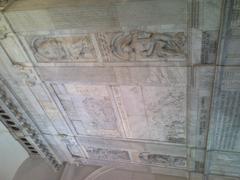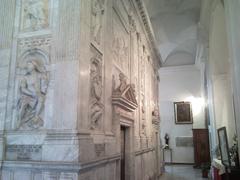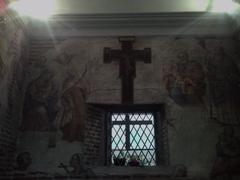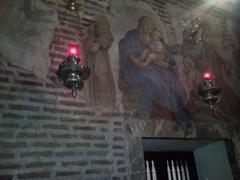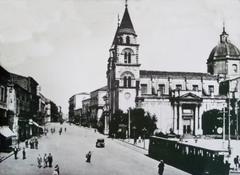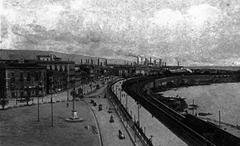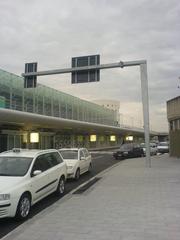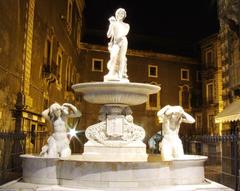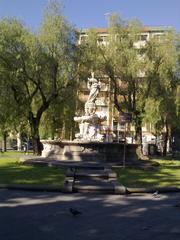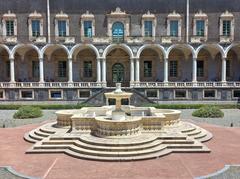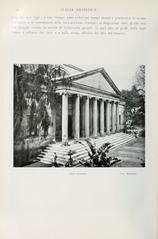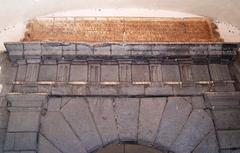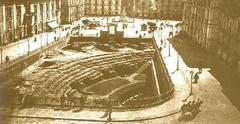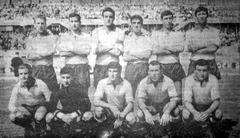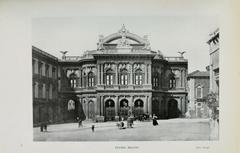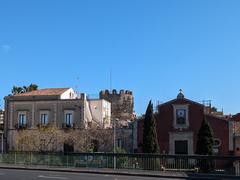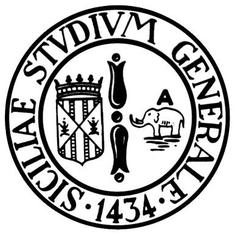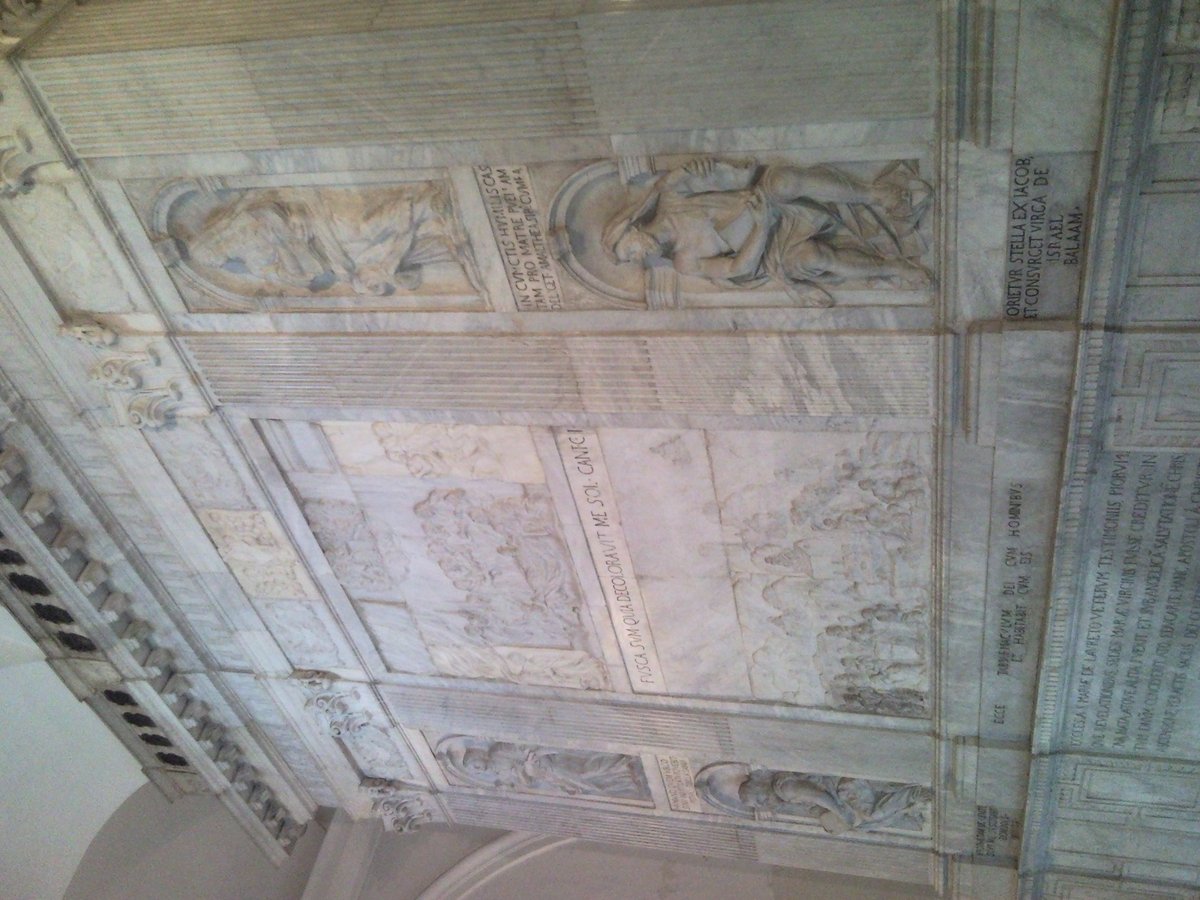
Santa Casa di Loreto Catania Visiting Hours, Tickets, and Visitor Guide
Date: 14/06/2025
Introduction
The Santa Casa di Loreto is a profound emblem of Marian devotion, artistic heritage, and historical intrigue. Whether you are drawn to the original shrine in the Marche region or to its evocative replica in Catania, Sicily, this guide will help you navigate the essential details of visiting hours, tickets, and the unique cultural significance of these revered sites. Both locations invite visitors into a rich blend of spirituality, history, and art—offering an experience that transcends time and geography. For further reading, consult authoritative sources such as Wikipedia, Sacred Sites, and the Comune di Catania.
Contents
- Introduction
- History and Origins
- The Miraculous Translation and Historical Evidence
- Architectural and Artistic Features
- Highlights in Loreto
- The Catania Replica
- Religious and Cultural Significance
- Visiting the Santa Casa di Loreto: Practical Information
- Frequently Asked Questions (FAQ)
- Plan Your Visit
- Conclusion
- Sources
History and Origins
The Miraculous Translation
The Santa Casa di Loreto is venerated as the Virgin Mary’s home, where the Annunciation occurred. According to tradition, the Holy House was miraculously transported by angels from Nazareth to Loreto in 1291 to protect it from danger after the fall of the Crusader states (Sacred Sites). This legend has inspired centuries of pilgrimage and artistic expression.
Historical and Archaeological Evidence
Modern research suggests the house may have been moved by human agency, possibly by the Angeli (Angelos) family—whose name may have given rise to the “angelic” legend. Archaeological investigations found that building materials and construction methods match those found in 1st-century Nazareth, with the house resting directly on the ground, as in the Grotto of the Annunciation (Wikipedia). Inscriptions in Hebrew and Greek further connect it to the Holy Land.
Architectural and Artistic Features
Basilica della Santa Casa in Loreto
The basilica, begun in the 15th century, encloses the Holy House in grand Gothic and Renaissance architecture. The interior features mosaics, frescoes, bronze doors, and the famed Black Madonna statue. The marble screen by Bramante and reliefs by Sansovino and Bandinelli highlight its artistic splendor (Wikipedia).
The Catania Replica
In Catania, the Santa Casa di Loreto was constructed in 1740 by Canon Giuseppe Lauria, inspired by his pilgrimage to Loreto (Around Catania). The replica is nestled within the Church of Santa Maria dell’Aiuto, a Baroque monument symbolizing the city’s resilience after the 1669 eruption. Its marble-clad exterior, medallions, and reliefs tell biblical and legendary stories, while inside, frescoes and a statue of the Madonna di Loreto reflect 18th-century Marian devotion (La Sicilia in Rete).
Religious and Cultural Significance
The Santa Casa di Loreto, both in Marche and Catania, is a center of Marian pilgrimage, prayer, and artistic heritage. The original shrine is a destination for those seeking indulgences and miracles; the Catania chapel fosters local identity and community through devotion and ritual. The Black Madonna, processions, and feast days reflect ongoing traditions. In 1920, the Madonna of Loreto was declared patroness of air travelers, further broadening her cultural impact (Wikipedia; Sacred Sites).
Visiting the Santa Casa di Loreto: Practical Information
Loreto (Marche)
- Visiting Hours: Typically 7:00 AM to 7:00 PM; check for seasonal changes.
- Tickets: Entrance is free; guided tours and audio guides may have a fee.
- Accessibility: Wheelchair accessible with ramps and elevators.
- Getting There: Loreto Station is 1.5 km from the basilica; buses and taxis available.
- Best Time to Visit: Early mornings, late afternoons, weekdays. Major feast days (Dec 10, Sep 8) are popular but crowded.
Catania
- Location: Church of Santa Maria dell’Aiuto, San Cristoforo district, central Catania.
- Visiting Hours: Usually 9:00 AM–1:00 PM and 3:00 PM–7:00 PM, Tuesday–Sunday. Confirm locally for holidays or special events (Comune di Catania).
- Tickets: Free entry; donations welcome.
- Accessibility: Ramps and assistance available.
- Guided Tours: Can be arranged via tourism offices or local operators.
- Nearby Attractions: Piazza Duomo, Roman Amphitheater, fish market, and more within walking distance.
- Best Times: Weekday mornings; Marian feasts in May and September 8.
Frequently Asked Questions (FAQ)
Q: What are the visiting hours for Santa Casa di Loreto in Catania?
A: Generally 9:00 AM–1:00 PM and 3:00 PM–7:00 PM, Tuesday–Sunday. Confirm for holidays.
Q: Is there an entrance fee?
A: No, admission is free; donations are encouraged.
Q: Are guided tours available?
A: Yes, through local tourism offices or by arrangement.
Q: Is the site accessible?
A: Yes, with ramps and assistance upon request.
Q: What are nearby attractions in Catania?
A: Piazza Duomo, Roman Amphitheater, Via Etnea, and local markets.
Q: Can I take photos inside?
A: Generally permitted without flash, but always confirm on-site.
Plan Your Visit
- Check official sources for updates: Santuario Madonna Aiuto, Comune di Catania, BEWEB database.
- Dress modestly: Cover shoulders and knees.
- Respect the site: Maintain silence, especially during services.
- Accessibility: Contact in advance if you have mobility needs.
- Combine your visit: Explore nearby historical and culinary gems in Catania.
Conclusion
Whether you are drawn by faith, art, or history, the Santa Casa di Loreto offers a unique experience—connecting the miraculous and the tangible, the universal and the local. The Loreto basilica is a masterpiece of Gothic and Renaissance architecture, while the Catania replica blends Sicilian Baroque artistry with enduring Marian devotion. Both sites are accessible, welcoming, and rich in tradition, making them must-visit destinations for spiritual pilgrims and cultural travelers alike. For the best experience, consult official resources, plan your timings, and immerse yourself in the sacred and artistic atmosphere of these extraordinary places.
Sources
- Basilica della Santa Casa (Wikipedia)
- Holy House of Loreto (Sacred Sites)
- Comune di Catania Official Tourism
- Around Catania
- La Sicilia in Rete
- Santuario Madonna Aiuto
